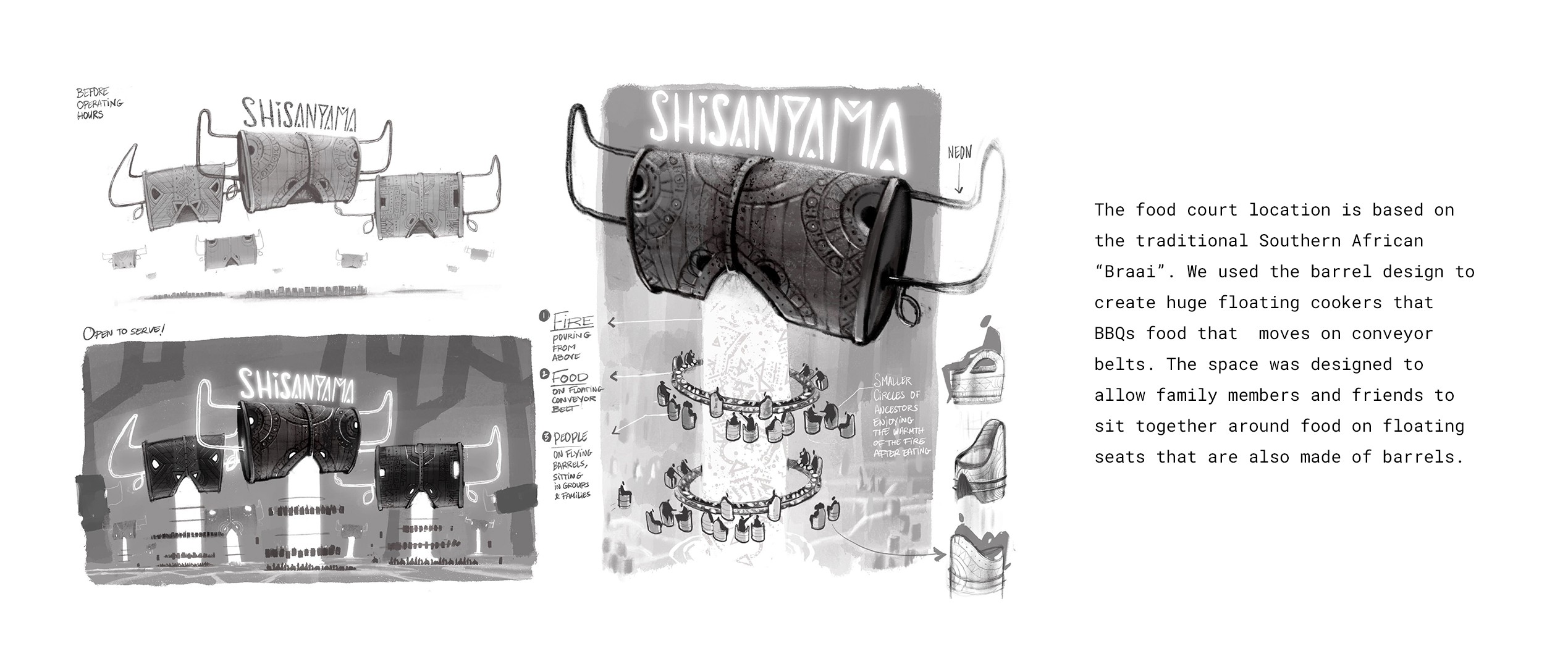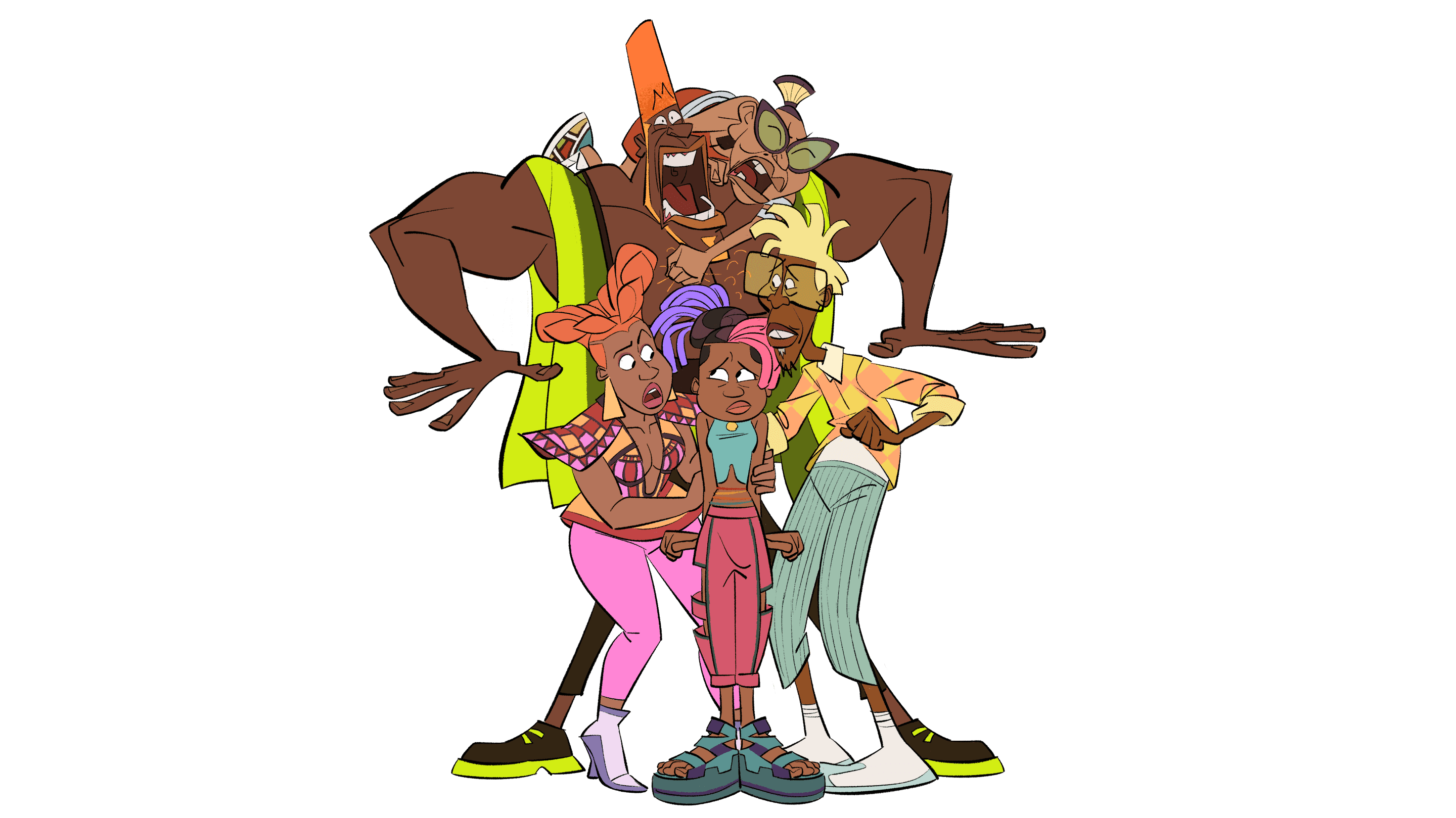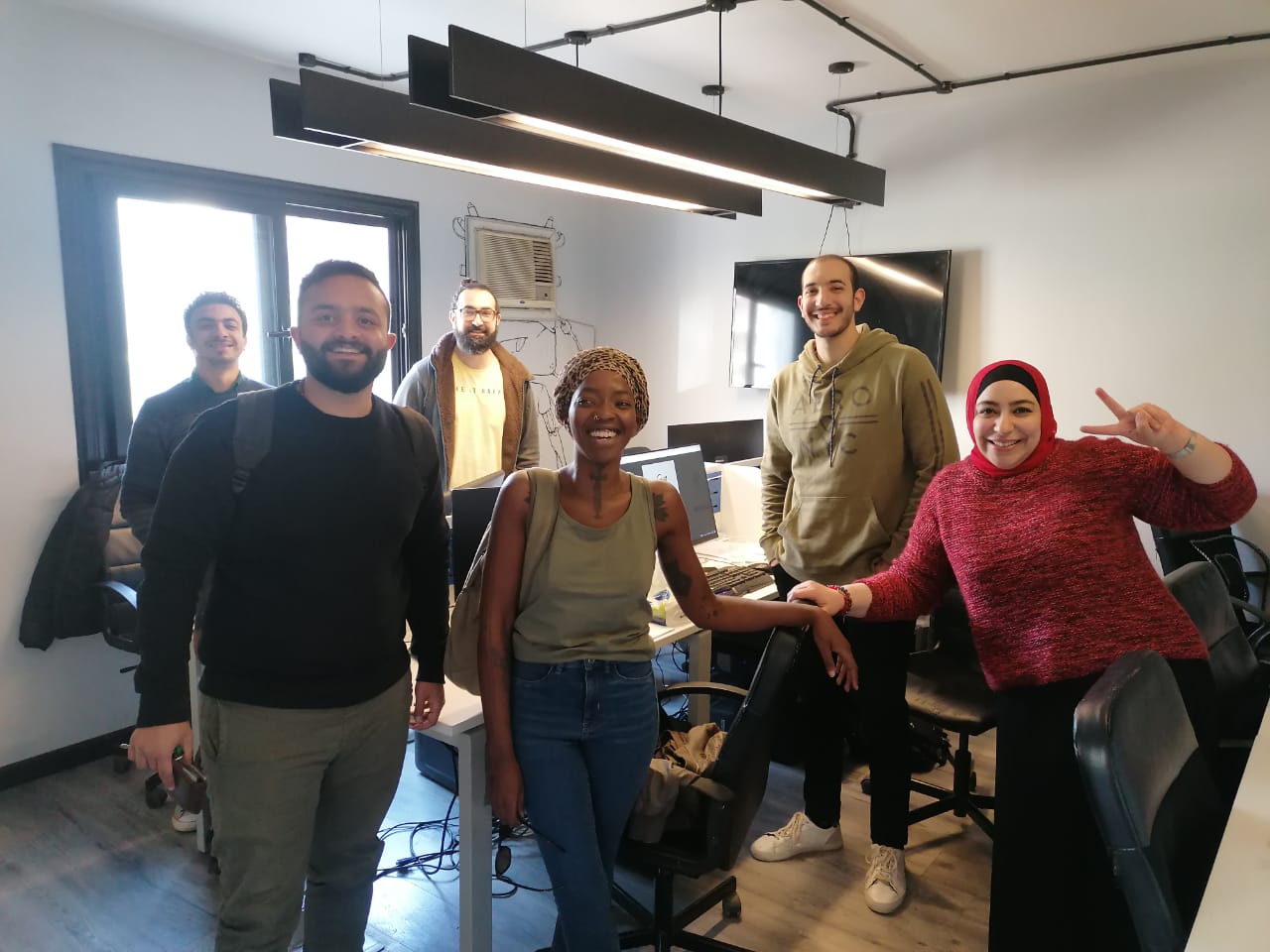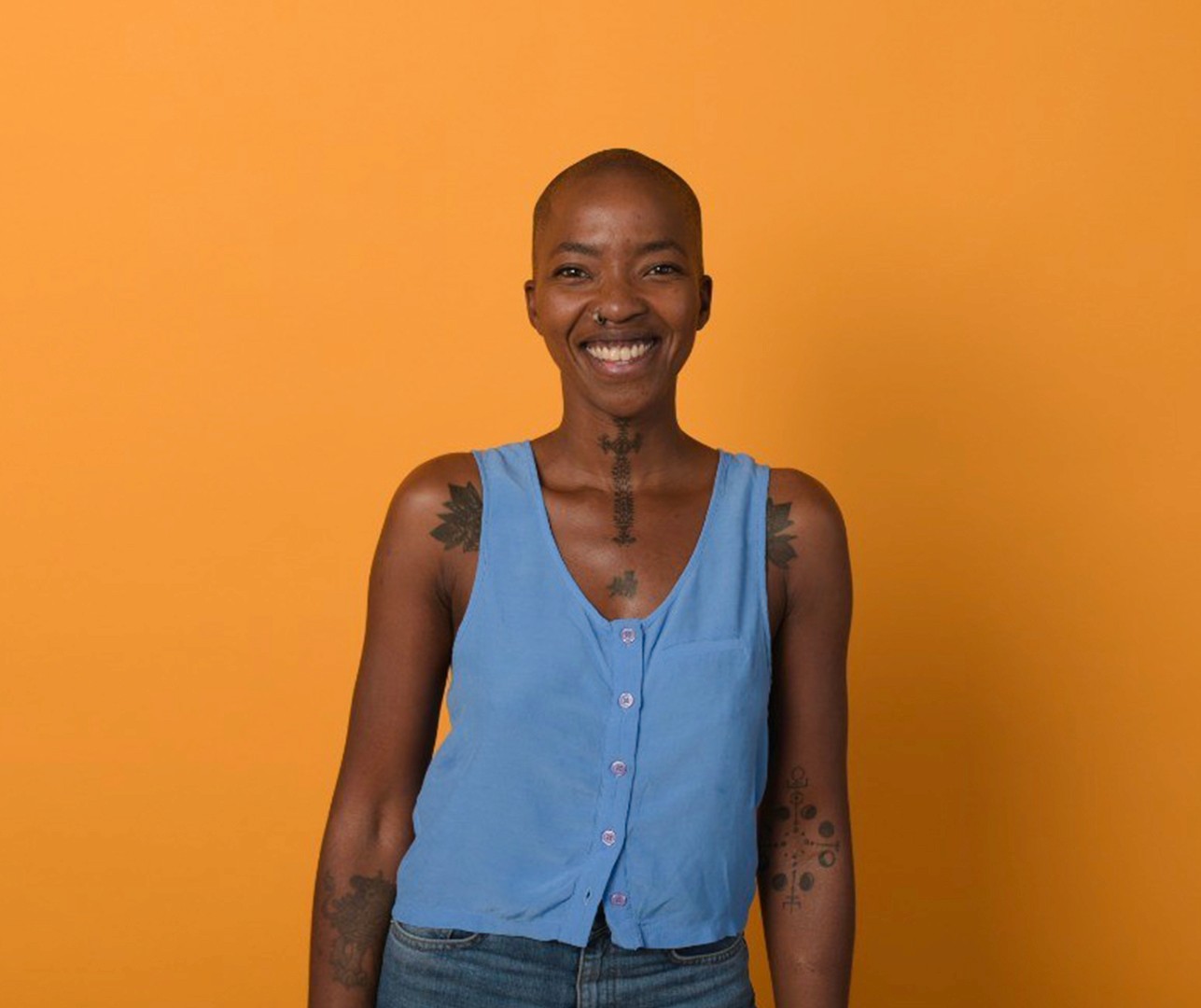
Jul 26, 2023
Teamwork in Animation: The Journey of Creating 'First Totem Problems'
“I can’t believe it, I was on tv! Ah! Did you see me? I was natural!” And just like Mike Wazowski, or Mared Washweshni to most of us, we couldn’t hold our excitement the moment we saw how much our hard work had paid off.
From working firsthand with Disney’s and Triggerfish's directors and producers to gaining invaluable lessons and advice along the way, our voyage was filled with all things magical, yet sometimes challenging, but with persistence and passion we were up to that challenge. Each department, team, and member worked collaboratively and creatively in creating Kizazi Moto’s First Totem Problems, a short episode film in the African anthology series.
“What made this experience stand out was how meticulously planned everything was…The production team made our lives so much easier, from crafting long-term timelines to daily to-do lists. This let me focus on the real job: deciding how our film would look,” said Ahmed Arafa, the film’s art director.
When Arafa shot for the art director role, he quickly realized it would not be an easy feat and he had to adapt to this new creative environment and disney’s high expectations. Disney’s meticulous work methods were eye-opening and allowed us to explore diverse approaches and visions in order to get the final result just right.
“This creative freedom was surprising. I had expected strict oversight and direction in a Disney+ film. But Triggerfish and Disney producers were there to help, give feedback, and offer advice. They listened carefully to what we presented and made sure it felt authentic, with little interference.”
As an art director, Arafa had to focus on everything visual, from colors and patterns to flow and theme. It was important to represent South African culture without the cliche stereotypes in order to create something that is both genuine and unique.
“We needed to present authentic cultural cues through concept design without being explicit. This is how we came up with designs that feel African but still fresh and futuristic.”

Concept art
The audience may be most interested in the finished product, but as producers, directors, and animators we get our kick from the behind the scene puzzle pieces that create the final picture.
“The best part wasn't finishing the film, but seeing the first composited shots, combining backgrounds, animation, and effects, and realizing we had created something beautiful.”
But to create that beautiful masterwork, we had to ensure everyone was on board with the design guidelines and filled with maximum energy to push their artistic boundaries into new scopes. One of the first steps in bringing a story to life is to create a sequence that would take the audience through a smooth and exciting flow. We wanted the flow to feel like a rollercoaster ride, filled with adventure, excitement mixed with a dash of adrenaline.
“When I pitched the first sequence to Tshepo, I was waiting for her feedback on the gag I added and it wasn’t in the script, I was wondering if she would accept it or not! She surprised me that she didn’t just accept it, she built more on it and pushed the fun of the character more,” said Amr Shaalan, the storyboard artist.
As we moved with the storyboard, we faced one major challenge: minimizing the duration of the film. One would think that shorter films are easier to work with, but the sad truth is it just has more babies to kill.
“We got rid of some shots and sequences and tried to reorganize the dialogue again to get the same picture but with fewer pieces.”
In other words, we had to treat the sequence like a ginger power shot: small, yet powerful. Thankfully, we had the help of Ukrainian freelance storyboard artist, Sofia Zorska, whose vision and skills allowed us to reach the required result. Zorska can be easily described as a team player, merging seamlessly with the team.
“My absolute best experience is communication with the team. Working as a freelancer all the time, I was deprived of studio experience - being in one space with my colleagues, and building connections, spending time together outside of the job. Giraffics team 'broke the curse' if I might say,” she said.
The production of the short film fell amid the Ukrainian-Russian war, putting everything on pause. Our production team faced a challenge pushing the workflow, and Zorska faced a much bigger one back home. Despite fleeing her home country mid production, Zorska was able to fight back and show her true potential and deliver such intense commitment and talent in her work with Shaalan.
“Work distracted me from war horrors … Their [Giraffics team] presence, willingness to listen, and support helped me maintain my mental form in a way I could finish the job. I will always be grateful to my team. I believe that facing and going through hardships create a special bond.”
As we gained a more confident hook on our story’s storyline and plot, we had to start focusing on the stars of the show. And here we faced another major challenge: portraying the character’s actions, expressions, and motivations in respect to their culture. As a new generation in the era of social media and globalization, we understand the frustration of identity, of defining who we are in comparison to ourselves and the regions around us. So, we wanted to defy that by creating something relatable and touching.
“We wondered how animators could make the characters relatable, convincing, and true to life. It was then that Sidney Kombo offered invaluable advice: we should base our characters on real people we know, act out scenes ourselves if possible, or find actors who embodied our characters,” said Menna Hamdy, assistant director.

Mimi's expressions
And from there we started building a library, with the help of Tshepo, of feelings, emotions, conflicts, and actions grounded in reality and real inspirational references.
“The discussions and decisions involved in creating each character were extensive. After designing the characters, we discovered individuals who not only resembled them but also portrayed their traits remarkably well,” said Hamdy.
As we filled our brains with hundreds of references, we were confident in putting our fingers to the work and designing the character line up. Our designers and animators put their all in painting our vision and transporting us into our story’s realm.
“Our characters, fascinatingly complex and teeming with intricate patterns, required a huge amount of acting references from Tshepo and Menna. It was a task that demanded numerous experimental attempts by our phenomenal Animation Director, Bruno Brazil,” said Yamen Zakria, producer.
Brazil worked on hiring a talented team of animators who could help bring his vision to life. “With the help of Tshepo, I was able to direct the team to create authentic African acting that was up to Disney standards,” said Bruno.
But such work can also come with sudden changes, new developments, and sneaky adjustment to perfectly align with the vision.
“There was a moment when I took it upon myself to do some personal last minute adjustments to the entire character line up and asked to present it to the directing team, and was surprised that they were completely onboard! Not only with the line up, but also with the initiative itself,” said Abdualla Moatasem, lead character designer.
As lead designer, Moatasem took it upon himself to take the risk and present a better, more modified version of our characters to fully capture the essence of the film. He, also, worked on building a creative space for his team that allowed them to create something they are proud of.
“Suddenly, the job wasn’t just drawing but also managing a team, setting standards, motivating and explaining my vision as clearly as possible, worrying about timeframes and deadlines, and many more nuances that had to do with being a lead.”
Despite the hectics, Moatasem and his team had a powerful production support which made things easier and gave them guidance and solutions along the way. With these changes and precise attention to the character’s details, we had to ensure consistency in style and test several approaches before we found the perfect technique that kept the drawings coherent and balanced.
“We fell in love with the characters' designs, which are lovely but a bit detailed. We had to test several approaches before we found the perfect technique that kept the drawings consistent and somewhat relevant to traditionally animated main characters,” said Aya Quandeel, cut-out animation lead.
But deciding on the best technique for our story was not a one-man job. The production team was always ready to handle any situation or challenge through briefings, assigning tasks, follow-up tools, or simply being present for emotional support.
“I gathered a phenomenal production team consisting of Maryam Khadr, Stefanie Dias, and Sherif El-Sayed. Together, we became the real musketeers of the project, to create an environment that allows the artist to immerse themselves fully in their creative process without distractions of budget constraints, deadlines, or technicalities,” said Zakaria.

First Totem problems characters
Working with Disney, the production team had to defeat multiple challenges that arose during the process. From visual development and animation execution issues to personal problems and overwhelmed artists, the team had to, like battle drums, pump shots of affirmation and encouragement along the way.
“Much of this groundwork involved constructing new systems, but we also incorporated and enhanced existing mechanisms from the Giraffics pipeline. Ultimately, all these elements came together to create a well-oiled machine that allowed our artists to do what they do best – create.”
And that is exactly what we did. We created.Part

Some of 'First Totem Problems' team from Giraffics office
As we gathered in our studio in front of one big screen, we watched our final product, filled with an almost child-like awe at what we were able to achieve.
“We are incredibly proud to be the first animation studio in the Middle East to collaborate with Disney. In 2019 we traveled to the Annecy Film Festival trying to secure financing for our movie The Grand Night, and that's when we met Stuart Forrest, Triggerfish's CEO. It became clear from that moment that Triggerfish's passion and vision is aligned with ours at Giraffics,” said Abdulrahman Khedr, Giraffics CEO and executive producer.
Working with Disney and Triggerfish has been a transformative experience for everyone at Giraffics. Their rich history and expertise in animation provided invaluable insights and amazing practices which helped us focus on character development, creating compelling narratives, and ensuring our animations evoke emotional connections with the audience.
“Our partnership and collaboration with Triggerfish was and is inspiring for any studio in Africa, their belief in African studios, and their strong commitment to boost African talents is inspirational, and that's what Kizazi Moto is about, and they stayed true to their promise and values,” said Khedr.
As we embark on a journey of discovery, passion, and art, we are proud to learn, work, and achieve. We truly believe in what we can do, but most importantly, we believe in its impact and lingering effects that leaves a touch of spark on everyone. And as we continue down that road, we will never forget one of the first pieces of advice shared by the Disney team.
“Yes, there are deadlines. Yes, there are budgets. But at the heart of it all, our mission is to entertain people. To achieve that, we first need to entertain ourselves, to enjoy the process without undue stress.”

